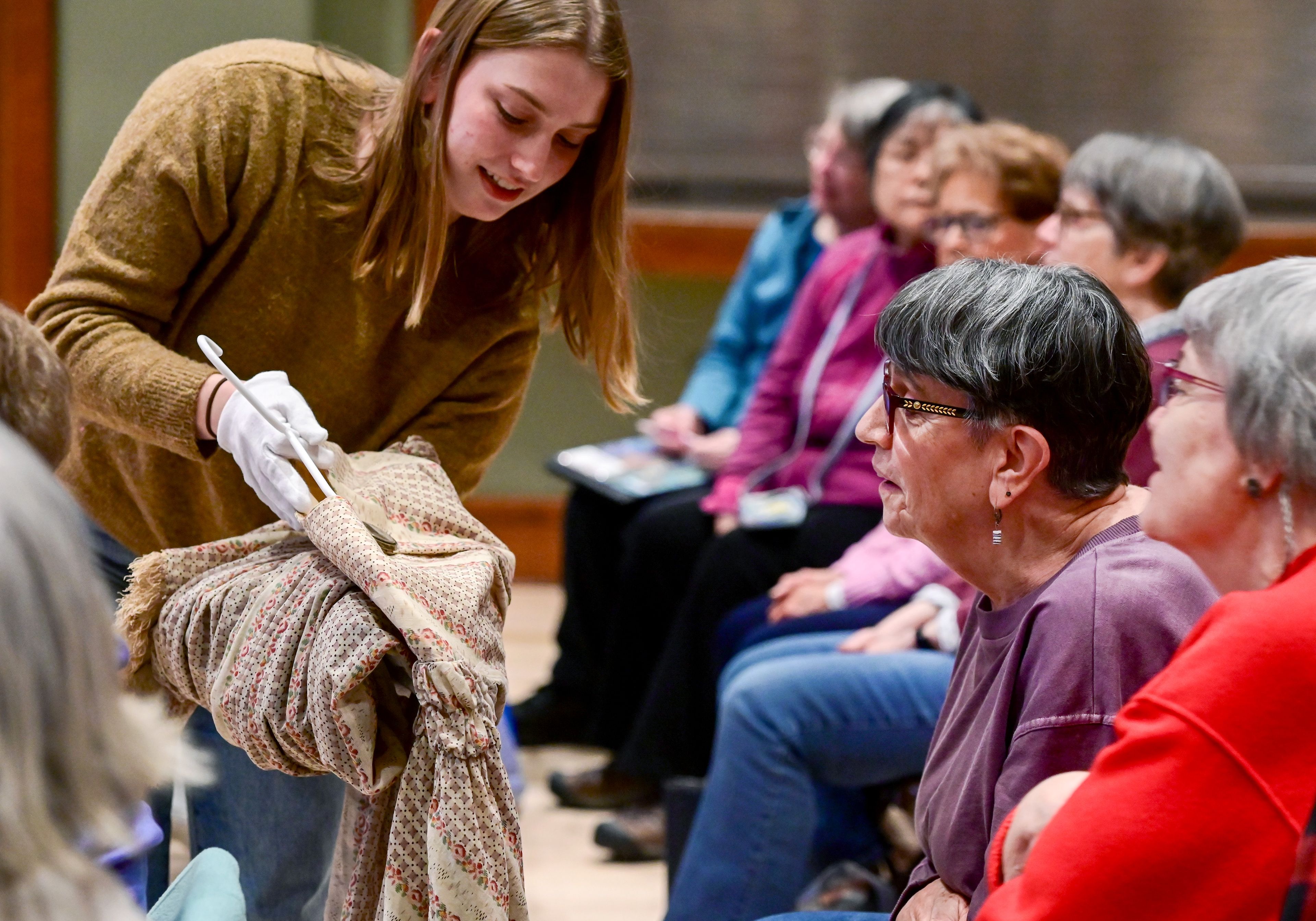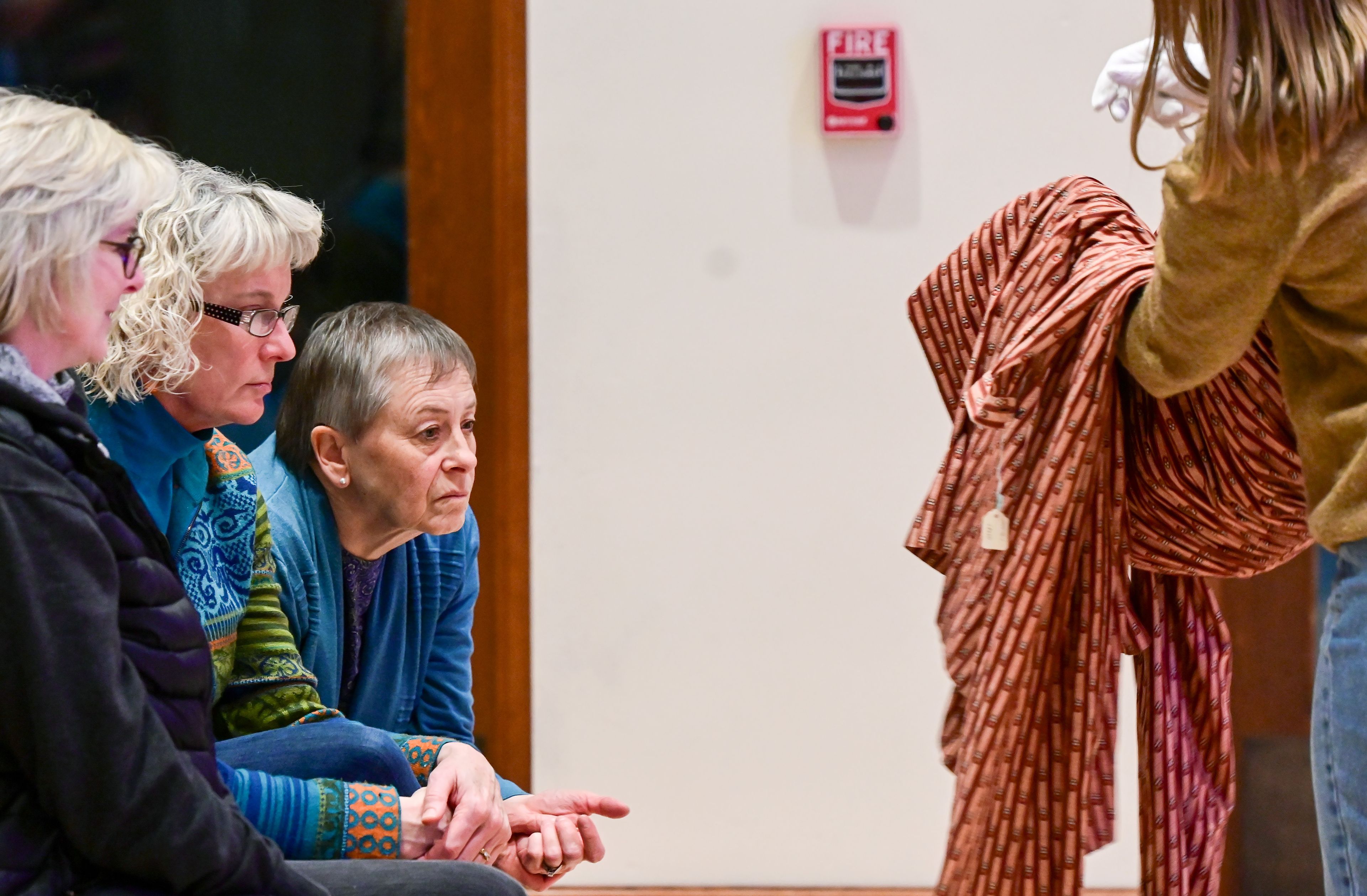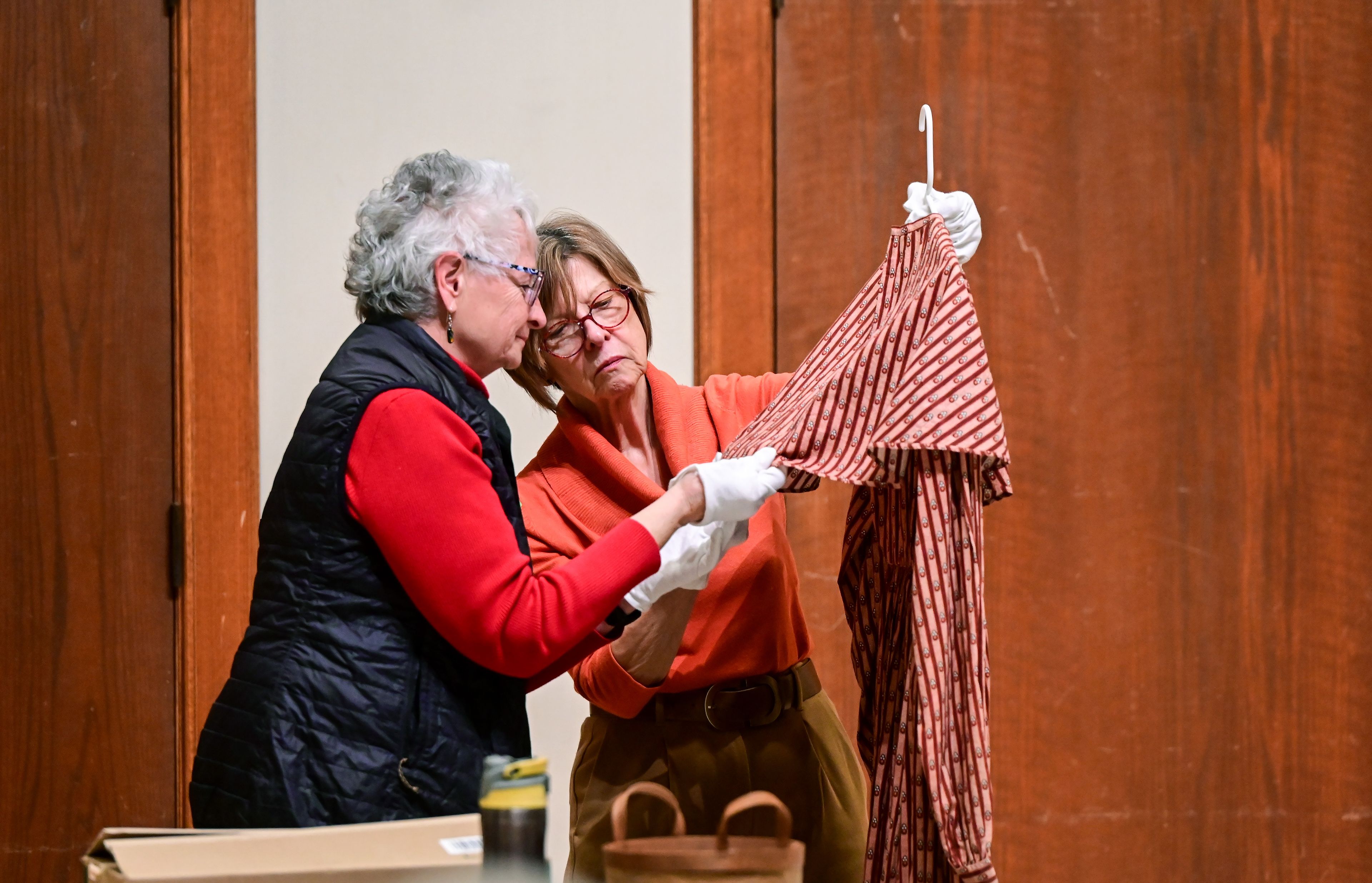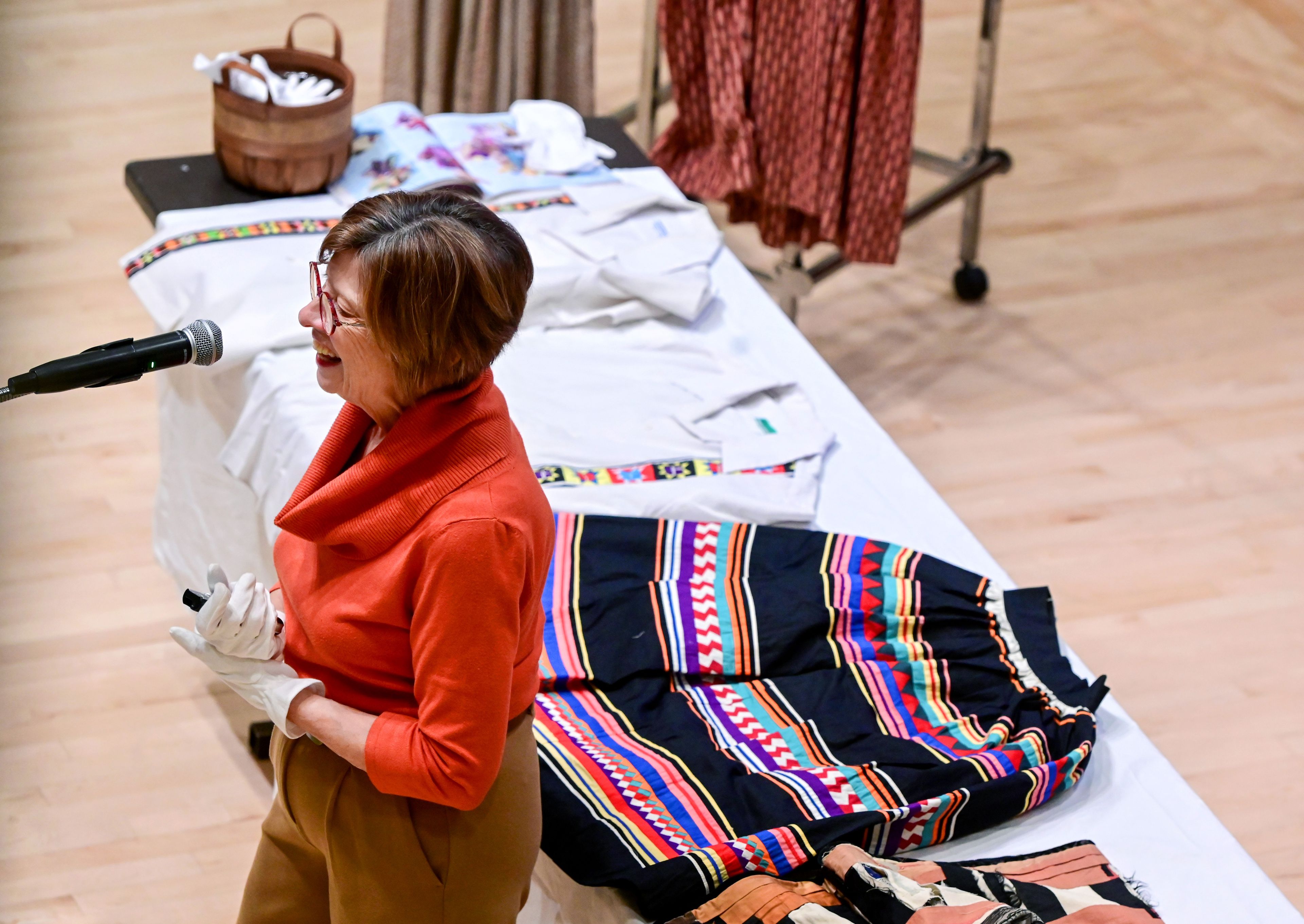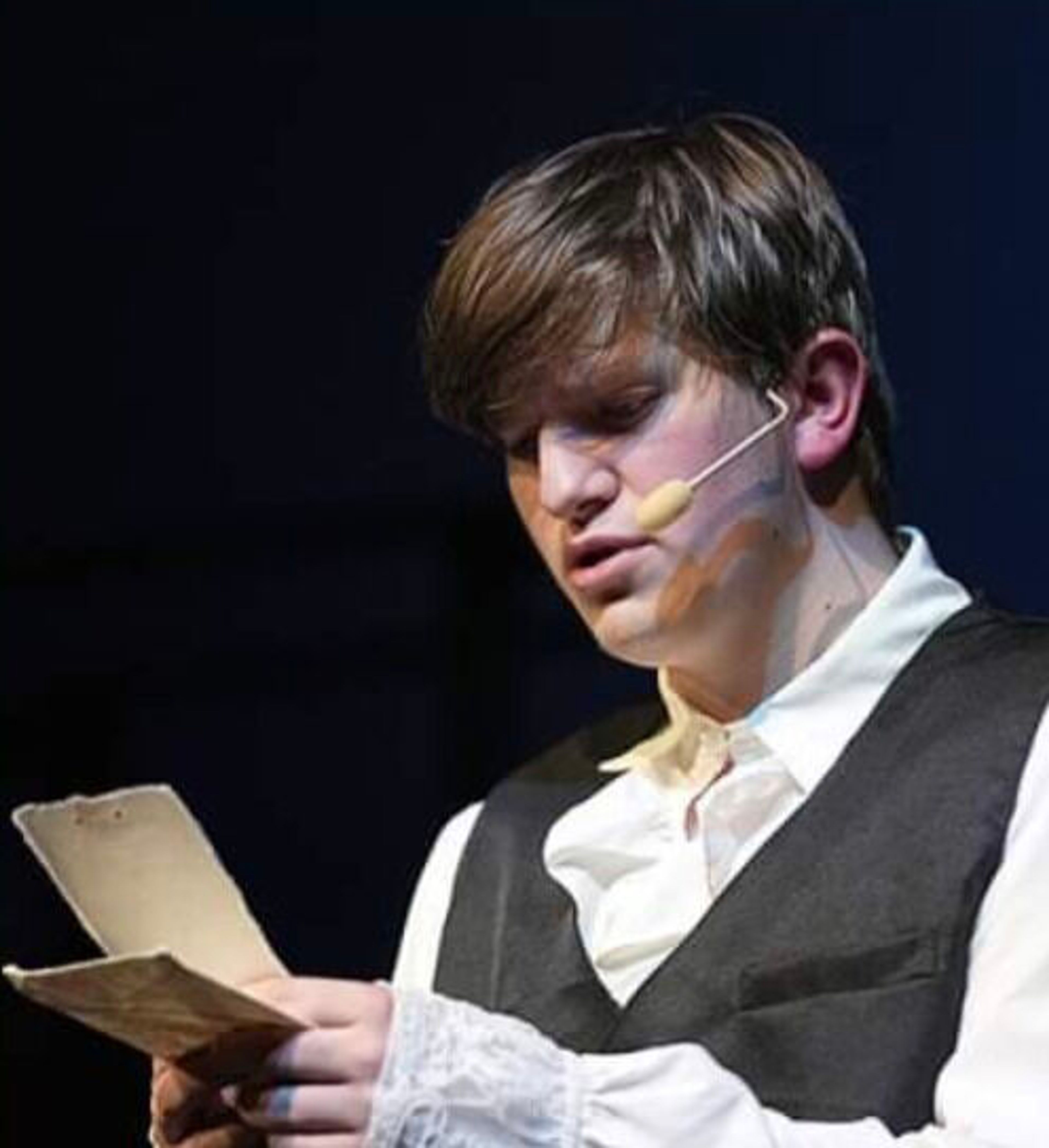Historic costumes shown off at Palouse Patchers meet
UI textiles professor regales Palouse Patchers with clothing items — and stories — from historic collection
The Palouse Patchers opened their March meeting Tuesday night at the 1912 Center in Moscow with a presentation from Sonya Meyer, a professor in textiles, apparel and design at the University of Idaho.
Meyer is also the curator of the Leila Old Historic Costume Collection, which houses more than 8,000 pieces of clothing, accessories and shoes, and around 800 pieces related to lace and lacemaking. The collection is held in Hayes Hall at UI and is part of the Margaret Ritchie School of Family and Consumer Science. The collection focuses on items from the Palouse.
“It’s quite a story of people’s lives, the university and the Palouse,” Meyer said.
For Patcher members to see, she brought two dresses from the 1800s, two men’s shirts from Thailand, a Seminole pieced skirt and two quilts. The skirt was sewn in a style originating from the Seminole tribe in Florida. The shirts, Meyer said, were distinctive as Thai because of a particular strip of embroidery down the front.
Ritchard Old is the son of Leila Old and was in attendance. He did not normally attend patchers meetings but had come with a friend who saw a notice about the meeting. He said his mother loved preserving textiles and had a deep knowledge of fashion trends and clothes.
“I was there when they named it after her and it was an honor she appreciated,” Old said.
He brought a donation with him to give to Meyer — a small collection of fabric swatch magazines. One magazine was dated in the late 1940s and featured fabrics, patterns and insight into fashion trends of the time.
The collection was started in 1967 and named after Leila Old in 1981. The size of the collection has started to overwhelm the available space, Meyer said. Photos included in a slide presentation showed packed closets.
One dress she had brought was made in a red patterned fabric and had seen little wear. Before checking the donor card she thought it was a theater piece. The dress, she said, was donated with a story — that it was the last dress a mother had sewn before having her last baby.
Meyer said she didn’t know what exactly happened to the woman who sewed it but said the fact that the dress had been preserved for so long meant the family must have packed it away out of love instead of getting rid of it.
The other dress she brought was donated by Mary Bell Sweet, who was a University of Idaho librarian. The dress had a brooch made with hair inside it, which was a common practice during the Victorian era.
She also discussed some of the collection’s recent exhibits, which covered fashion through the decades, wedding dress trends and service member uniforms. During her presentation, Meyer pointed out special pieces in the collection, including a black maternity dress. The dress is interesting, Meyer said, because it was made of a silk blend fabric and is beaded and features a fully fitted back with an open front to accommodate a pregnancy.
“It’s interesting to me because, ‘Who was this woman and why did she have this dress?’” Meyer said.
The quilts were delicate and had “shattered silk” — the silk fibers had started to break down, were completely missing pieces and looked shredded. One was a Victorian crazy quilt that featured silks, velvets and embroidery.
These quilts often feature rudimentary embroidery as well as skilled stitches. Meyer said sometimes the quilts were used to teach young children the stitches or a decades-long project for women.
“It’s not a functional quilt,” Meyer said. “It’s strictly for show.”
Kali Nelson can be contacted at knelson@dnews.com.
